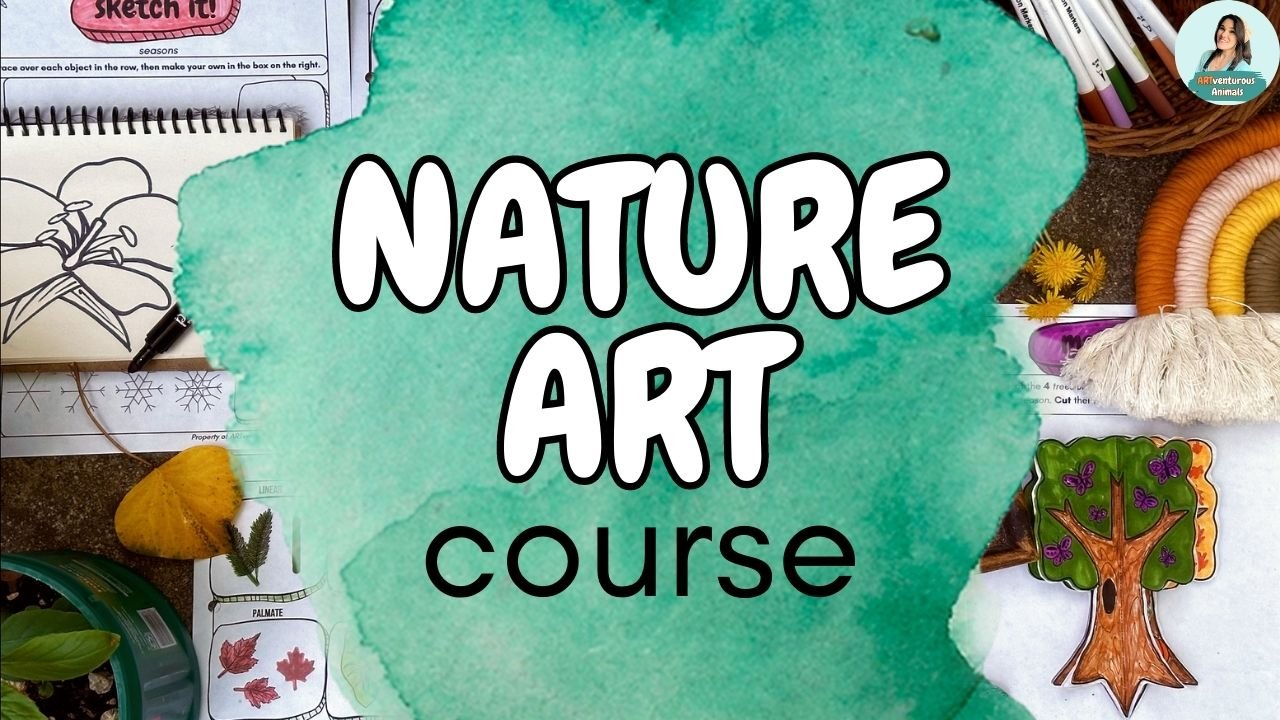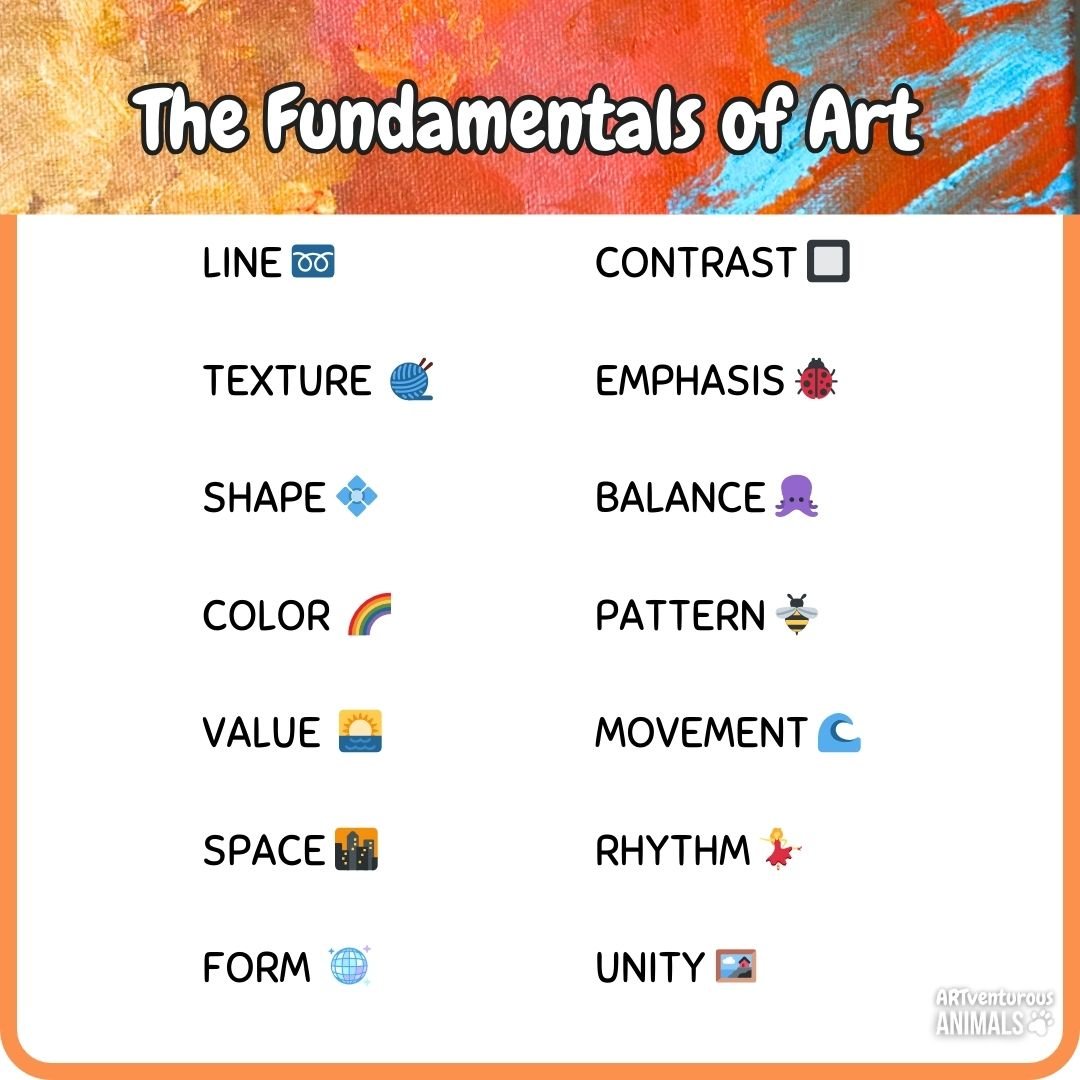How to Teach Art: The Element of Shape
Welcome to the ARTventurous Academy!
I want to teach you how to teach your kids or students all about the fundamentals of art, but with a bit of nature and adventure.
Today’s lesson: the element of shape
LESSON 3
Have we met yet?
Hey there! I’m Abbey Allen—art teacher, elementary teacher, online educator, and artist. I’m also a mom of two and was homeschooled.
I believe kids learn best when they’re engaged, curious, and excited. That’s why I design art projects that take them beyond the page—into nature, into the animal kingdom, and into the world around them.
Let’s dive into this free art lesson!
Share this if you find it helpful 🎨
The Fundamentals of Art—and Why You Should Care
If you’re coming here from a previous How to Teach Art lesson, scroll past this.
As a kid, I was mostly self-taught when it came to drawing, sketching, and painting. Of all the different art topics, the ones I hated the most we’re honestly the ones all about the elements of art. It’s so funny because I love teaching elements of art now! That’s because I figured out ways to incorporate the elements of art into topics that kids actually love.
The basic fundamentals of art can be divided into the elements of art and the principles of design.
Some people have different definitions of a couple of these and some of them overlap, but I’m just gonna give you seven elements of art and seven principles of design.
These are the 14 that I based all of my classes and resources off of.
Elements of Art:
1) line ➿
2) texture 🧶
3) shape 💠
4) color 🌈
5) value 🌅
6) space 🌆
7) form 🪩
Principles of Design:
1) contrast 🔲
2) emphasis 🐞
3) balance 🐙
4) pattern 🐝
5) movement 🌊
6) rhythm 💃
7) unity 🖼️
These fundamentals of art are the basis behind all works of art.
How to Teach the Element of Shape
1) Play with shape.
Play is the best way to introduce a new concept to kids in my opinion.
Set up a bin, box, or table full of items with various shapes. You’ll want to grab items that are geometric and organic.
GEOMETRIC: objects with clearly definable shapes. Some examples are circles, squares, triangles, etc.
ORGANIC: objects with an undefinable shape. Some examples are shells, rocks, and leaves. Lots of natural items!
Here’s the list of items for the tray I made:
💠 RIGHT SIDE
-plastic ball
-Easter egg
-rubber square
-puzzle cube
-star cup
-duplo
-wooden rainbow piece
💠 LEFT SIDE
-coral
-leaf and stem
-shells
-rocks
The focus of this lesson is NOT 3D shapes.
Shape is more about the outline of objects (2D), not the form of objects (3D).
Prompt your kids or students to start thinking about the shapes they see and feel.
Can you find 2 items that are similar to you?
What is the same about the group on the left? And on the right?
What is different about the group on left versus the group on the right?
Which group do you like better?
Let kids touch and play with items before continuing on. Keep using the word “shape” as you trace your finger along the outline of the objects.
8+ EXTENSION
Kids who are older may play in a different way. Try making this bin into a mystery! Prompt them with the question, “Why did I group these items like this?” Guide them to discovering the geometric and organic categories. You can lay out a shapes poster as an assistant. They’ll love solving the mystery!
2) Explain the element of shape.
This is how I explain shape when I’m teaching:
“Shape is all the outside lines of an object connected together.
Shapes can be used in art to create animals, flowers, people, and even stories!”
If you want to go deeper into the types of shapes, here’s my definition from my art journals:
“Geometric shapes have consistent angles and sides. Organic shapes have no definite shape and are often found in nature.”
That’s it! This part doesn’t have to be fancy.
3) Go on an ARTventure.
Now your kids or students will be ready to search for shapes around them, so get them outside! Nature is the best place to start.
Go outside and hunt for different shapes of leaves and match them to their closest geometric shaped counterpart.
Check out the visual below to see what I mean:
8+ EXTENSION
Older kids will be interested to dive into the world of leaf shapes. There are so many! And there’s a list of leaf shape names, too. The 3rd unit in my Nature Art Journal covers this in depth.
4) Observe how artists use shapes in artwork.
This is the most important connection point! If your kids or students can see how textures are used in art, they’ll be able to replicate it.
Flip through these slides to see artwork I’ve used as examples in my classes. I’ve also included prompts for you to use!
5) Make your own!
At this point, your kids will be ready to make their own artwork. There are 2 ways you can go about this:
PROCESS ART: Grab art supplies and let your kids create without instructions! You’ll be amazed to see how all the information they’ve learned about the element of texture spills out in their artwork.
PRODUCT ART: If your kids or students are looking for more structure, try out a the activities in my Nature Art Journal! The second unit is alllll about the element of shape.
Not sure what process art is? I’ve got a few blogs explaining it!
DONE-FOR-YOU TEXTURE RESOURCES
1) Free — Easy Shape Art Activity. Watch the tutorial!
2) $ — Grab this print-and-go art journal! Kids learn about the element of shape independently with kangaroos in Australia.
3) $$ — 6 lesson Element of Texture Class. Check it out.
4) $$$ — Nature Art Course. Start your free trial now!



Leave a 🎨 or the word ART in the comments so I know you’ve been here 😆
Happy ARTventuring!










